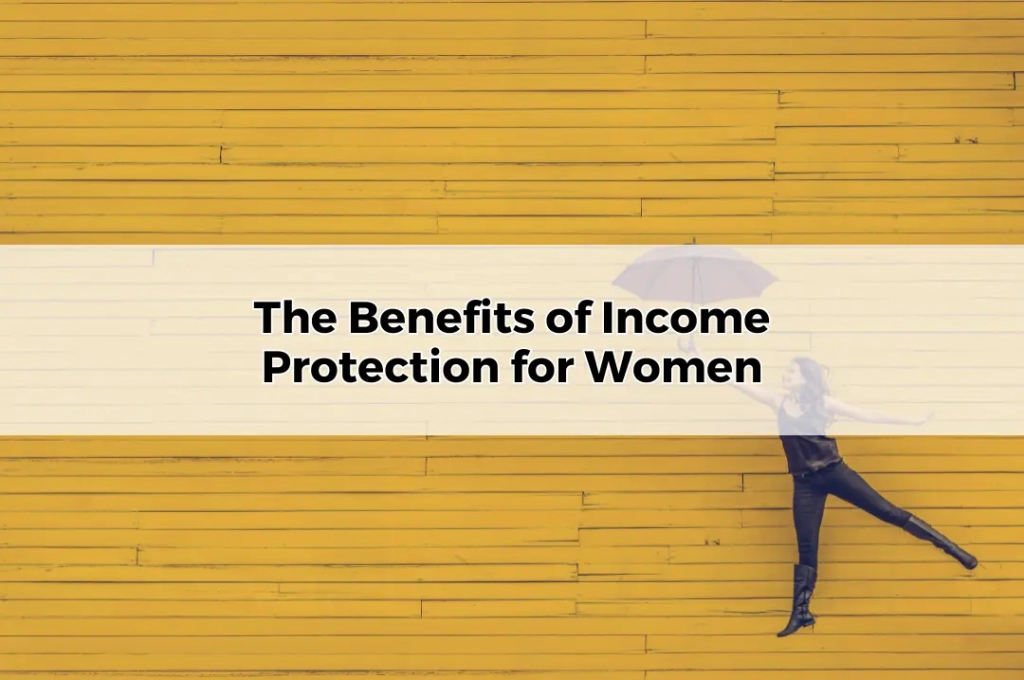The Benefits of Income Protection for Women
Table of Contents
ToggleIncome protection insurance is often overlooked, but it is one of the most vital components of financial security. For women, who may face unique financial challenges, including career breaks for caregiving and often lower average earnings, income protection can provide essential peace of mind. It ensures that, in the event of illness or injury, you’ll continue to receive a portion of your income, allowing you to maintain your financial obligations without unnecessary stress. Understanding the benefits of income protection is key to creating a robust financial safety net.
What is Income Protection Insurance?
Income protection insurance is a policy designed to replace a percentage of your regular income if you are unable to work due to illness or injury. Typically, it covers up to 75% of your income and pays out until you recover or reach the end of the benefit period. This means that, even if you face a significant health setback, your financial commitments—such as mortgage payments, household bills, and daily expenses—are still met. For women, especially those balancing careers with family responsibilities, income protection is an invaluable financial safety net.
Why Women Need Income Protection
Women often encounter unique challenges in the workforce that make income protection particularly important. They are more likely to take career breaks for caregiving and are often disproportionately affected by part-time work and underemployment. These factors can lead to reduced savings and superannuation balances over time, making income protection crucial to ensuring financial stability. Additionally, women face higher risks of certain health conditions, such as autoimmune diseases, which can impact their ability to work. Income protection provides essential coverage, ensuring that an unexpected health issue doesn’t derail their financial security.
Income Protection and the Gender Pay Gap
The gender pay gap remains a significant issue, with women earning less than their male counterparts in many sectors. This disparity can have a profound impact on long-term financial security, particularly in retirement. Income protection insurance helps to mitigate this issue by guaranteeing that a portion of a woman’s income is protected, regardless of pay gaps or other inequities. In the event of an illness or injury, income protection ensures that women continue to receive a substantial portion of their earnings, providing stability when it’s needed most.
Coverage for Maternity Leave and Family Responsibilities
Women are more likely to take time off work for maternity leave and to care for children or elderly family members. Some income protection policies offer specialised coverage for women during pregnancy, maternity leave, and caregiving responsibilities. While standard policies may not cover maternity leave itself, they often provide protection for health conditions related to pregnancy and childbirth, ensuring women have financial security if they experience complications. For those balancing family responsibilities, income protection can offer peace of mind that, in the event of illness, their income is still safeguarded.
Income Protection for Self-Employed Women
For self-employed women, income protection is particularly important. Unlike salaried employees, self-employed individuals don’t have access to sick leave or employer-sponsored income protection. This leaves them more vulnerable if they are unable to work due to illness or injury. Income protection provides self-employed women with a reliable source of income if they are unable to run their business, ensuring that they can meet personal and business expenses while they recover. In this way, income protection supports entrepreneurial women, providing financial stability in uncertain times.
Long-Term Benefits of Income Protection for Women’s Financial Security
Income protection offers more than just short-term financial relief; it provides long-term benefits for women’s overall financial security. By safeguarding income during health setbacks, income protection helps women maintain their lifestyle, meet financial obligations, and continue saving for the future. This can be especially important for women nearing retirement or those who are single or supporting children. With income protection in place, women can avoid dipping into savings or superannuation prematurely, helping to preserve their financial independence and ensuring a more secure retirement.
Mental Health Coverage in Income Protection Policies
Mental health issues affect women at higher rates than men, making comprehensive coverage for these conditions essential. Many modern income protection policies include coverage for mental health conditions such as depression, anxiety, and stress-related illnesses. This is particularly important for women, who may face unique pressures in balancing career, family, and societal expectations. Income protection policies that cover mental health ensure that women can take the time they need to recover without worrying about financial strain.
Tax Benefits of Income Protection for Women
One of the often-overlooked advantages of income protection is its tax benefits. In Australia, the premiums for income protection policies are generally tax-deductible, providing women with an added incentive to invest in this form of financial protection. By claiming income protection premiums as a deduction, women can reduce their taxable income, effectively lowering the cost of maintaining the policy. This tax benefit makes income protection an even more valuable component of a comprehensive financial plan.
Choosing the Right Income Protection Policy for Women
Choosing the right income protection policy is crucial to ensuring it meets your needs as a woman. Consider factors such as the waiting period, which is the time before benefits begin, and the benefit period, which determines how long you will receive payments. Some policies may offer additional features tailored to women’s health, such as coverage for pregnancy-related complications. It’s important to assess your specific needs, career, and financial obligations to find the policy that provides the right level of coverage. Consulting with a financial adviser can help ensure that you select the best policy for your situation.
Income Protection and Retirement Planning
Income protection also plays a key role in retirement planning. For women, who may have lower superannuation balances due to career breaks or part-time work, protecting their income is essential to maintaining long-term financial stability. An income protection policy can help ensure that health setbacks do not derail retirement savings plans by preventing the need to draw on superannuation early. By integrating income protection with superannuation and retirement strategies, women can ensure a more secure financial future, even in the face of unexpected challenges.
Conclusion
Income protection is a critical component of financial planning for women, offering a safety net in times of illness or injury. Whether balancing career, family, or self-employment, women face unique financial challenges that make income protection particularly valuable. By providing financial stability and protecting long-term savings, income protection ensures that women can maintain their independence and security, no matter what life throws their way. For women seeking comprehensive financial planning, consulting with a Toowoomba Financial Adviser or seeking retirement financial advice can help them tailor income protection policies to meet their specific needs.









